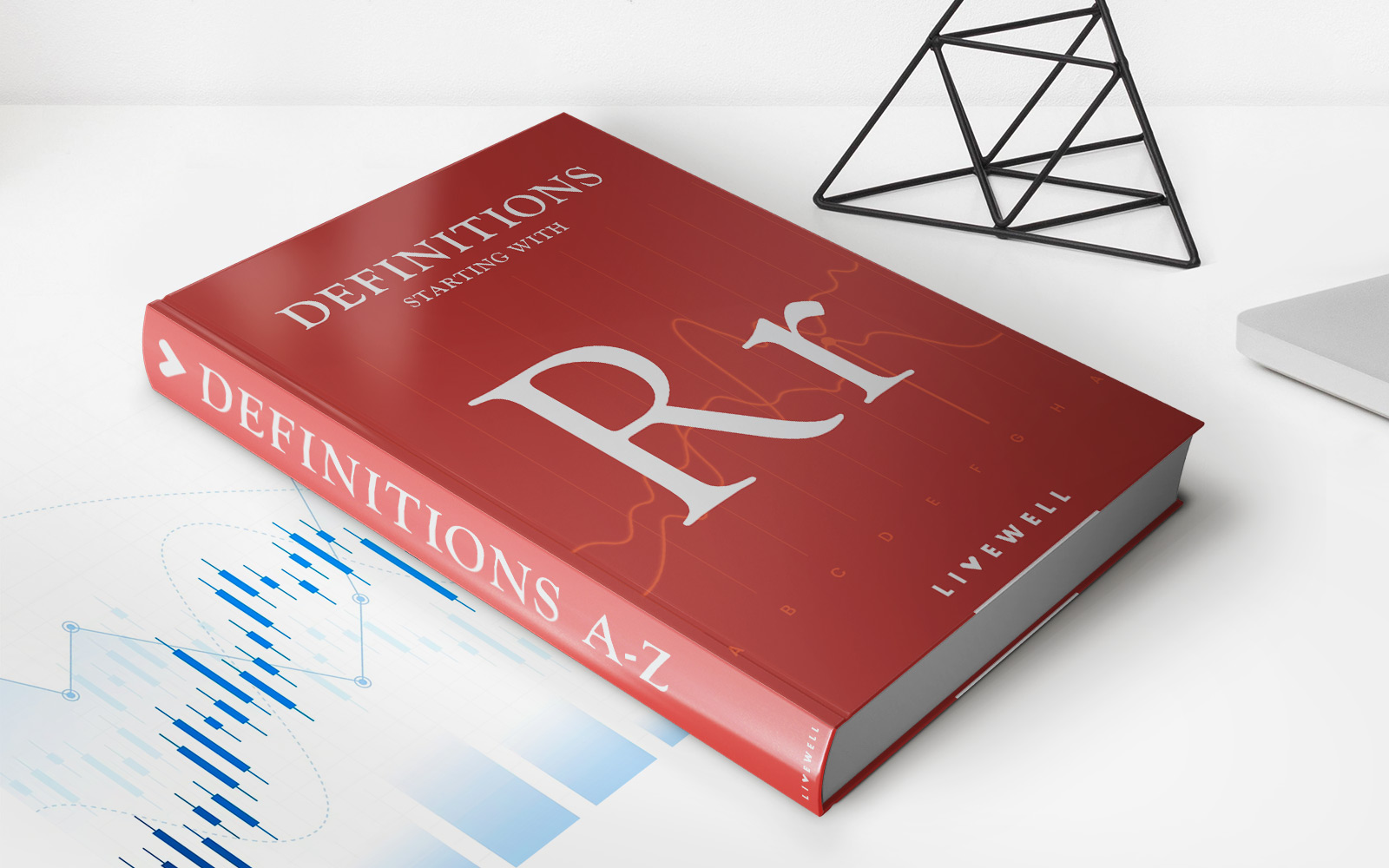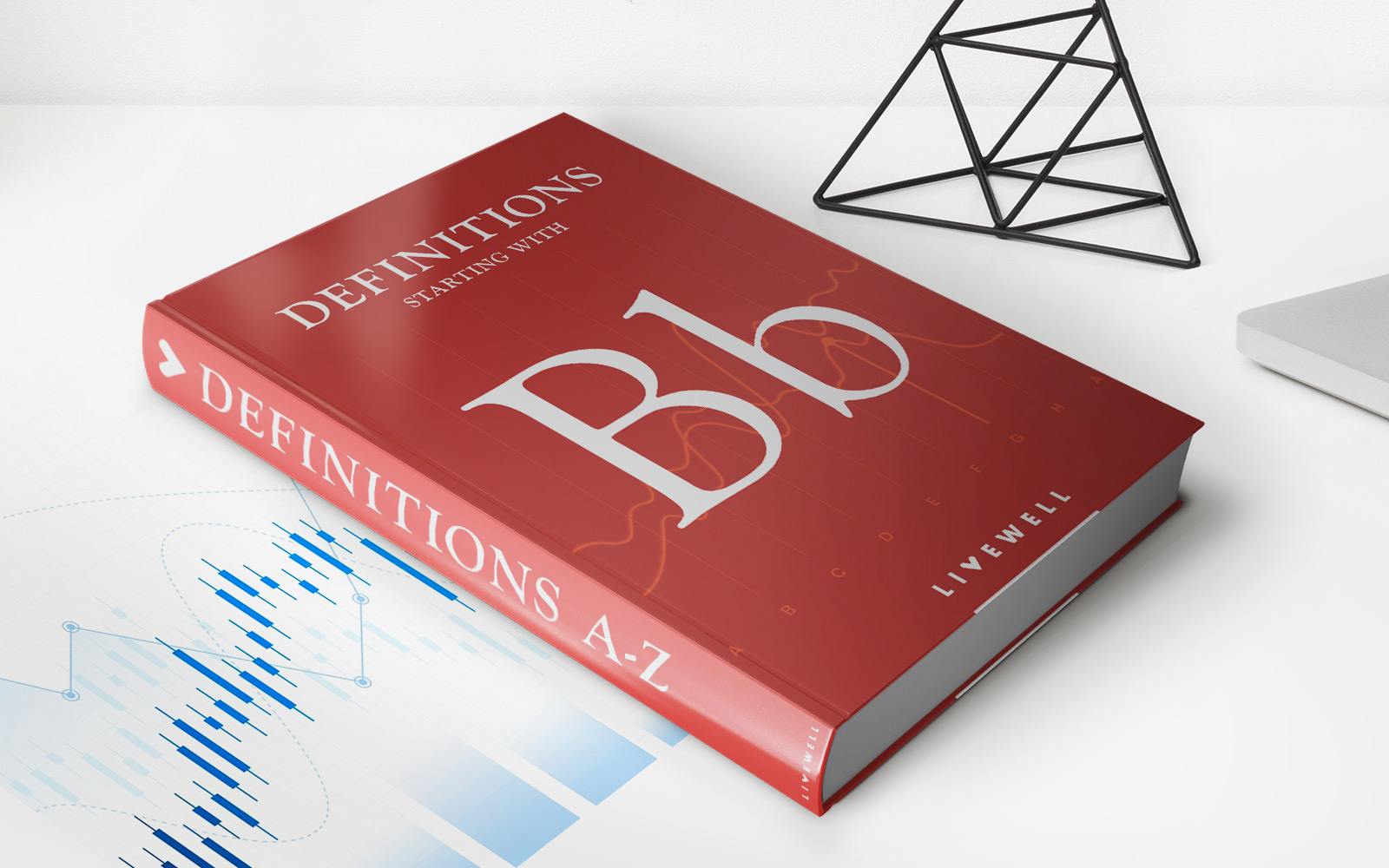Home>Finance>Which Life Insurance Policy Can You Borrow From?


Finance
Which Life Insurance Policy Can You Borrow From?
Published: November 18, 2023
Find the perfect life insurance policy to borrow from and secure your finances. Explore various options and choose the one that suits you best.
(Many of the links in this article redirect to a specific reviewed product. Your purchase of these products through affiliate links helps to generate commission for LiveWell, at no extra cost. Learn more)
Table of Contents
- Introduction
- Understanding Life Insurance Policies
- Types of Life Insurance Policies
- Whole Life Insurance Policy
- Universal Life Insurance Policy
- Variable Life Insurance Policy
- Term Life Insurance Policy
- Features and Benefits of Borrowing from Life Insurance Policies
- Which Life Insurance Policies Allow Borrowing
- How to Borrow from a Life Insurance Policy
- Pros and Cons of Borrowing from a Life Insurance Policy
- Conclusion
Introduction
Life insurance is a crucial financial tool that helps provide financial security and peace of mind. It offers protection to your loved ones in the event of your untimely demise. However, did you know that some life insurance policies also offer the option to borrow money? That’s right, in addition to the death benefit, certain life insurance policies allow you to tap into the accumulated cash value to meet your short-term financial needs.
In this article, we’ll explore the different types of life insurance policies that offer borrowing options and delve into the features, benefits, and considerations associated with borrowing from these policies. Whether you’re facing unexpected medical expenses, planning for your child’s education, or looking to consolidate debt, borrowing from a life insurance policy can be a viable solution.
Before we delve into the specifics, it’s important to understand the various types of life insurance policies available in the market. These policies differ in their structure, premium payments, death benefit provisions, and of course, their borrowing options.
So, if you’ve ever wondered which life insurance policies allow you to borrow money and how you can take advantage of this feature, read on to find out more. We’ll explore the different types of policies, the process of borrowing, and the pros and cons associated with taking a loan from your life insurance policy.
Understanding Life Insurance Policies
Before we delve into the details of borrowing from life insurance policies, it’s essential to have a clear understanding of how life insurance works. Life insurance is a contract between the policyholder and the insurance company, where the insurer promises to pay a sum of money, known as the death benefit, to the designated beneficiaries upon the insured individual’s death.
Life insurance policies are designed to provide financial protection and support for loved ones in the event of the policyholder’s passing. The policyholder pays regular premium payments, and in return, the insurance company guarantees the death benefit to the beneficiaries.
However, it’s important to note that not all life insurance policies are the same. They can vary in their structure, benefits, and flexibility. Understanding the different types of life insurance policies will help you make an informed decision when it comes to choosing one that suits your needs.
The four main types of life insurance policies are:
- Whole Life Insurance Policy
- Universal Life Insurance Policy
- Variable Life Insurance Policy
- Term Life Insurance Policy
Each type of policy has its own unique features and benefits, as well as specific provisions regarding borrowing. Let’s explore each of these policies in more detail to better understand how they work and what borrowing options they offer.
Types of Life Insurance Policies
When it comes to life insurance, there are several types of policies available in the market. Each type has its own characteristics, benefits, and considerations. Understanding the different types of life insurance policies is crucial in determining which one is the most suitable for your needs.
- Whole Life Insurance Policy: This type of policy provides coverage for the entire lifetime of the insured individual. It offers a death benefit and also accumulates cash value over time. Whole life insurance policies typically have fixed premiums, guaranteed death benefits, and may offer the option to borrow against the cash value of the policy.
- Universal Life Insurance Policy: Universal life insurance policies offer flexible premium payments, allowing policyholders to adjust their coverage and premium amounts as needed. These policies also accumulate cash value, and some universal life policies allow for borrowing against the cash value component. However, it’s important to note that borrowing from a universal life insurance policy may impact the policy’s death benefit.
- Variable Life Insurance Policy: Variable life insurance policies offer both a death benefit and an investment component. Policyholders have the ability to allocate their premiums into various investment options, such as stocks, bonds, and mutual funds. These policies may also enable borrowing against the cash value, but the fluctuating investment performance can affect the policy’s overall value and available borrowing amount.
- Term Life Insurance Policy: Unlike the aforementioned policies, term life insurance provides coverage for a specific period, such as 10, 20, or 30 years. Term policies do not accumulate cash value and generally do not offer borrowing options. They are typically more affordable compared to permanent life insurance policies and are often chosen for their simplicity and lower premiums.
It’s worth noting that the availability of borrowing options and the specific terms may vary depending on the insurance company and the policy itself. Therefore, it’s important to carefully review the terms and conditions of each policy to fully understand the borrowing provisions before making a decision.
Now that we have a clear understanding of the different types of life insurance policies available, let’s explore which policies allow borrowing and how it can be done.
Whole Life Insurance Policy
A whole life insurance policy is a type of permanent life insurance that provides coverage for the entire lifetime of the insured individual. It offers a death benefit that remains in force as long as the premiums are paid. In addition to the death benefit, a whole life policy also accumulates cash value over time.
One of the primary advantages of a whole life insurance policy is the ability to borrow against the cash value component. The cash value functions as a savings component within the policy, growing tax-deferred over time. It accumulates through a combination of premium payments and investment returns, typically in the form of dividends from the insurance company.
When it comes to borrowing from a whole life insurance policy, it’s essential to understand the mechanics involved. The policyholder can request a loan from the insurance company, with the cash value serving as collateral. The borrowed amount is treated as a loan and is subject to interest, which is predetermined by the insurance company. The loan can be paid back over time or deducted from the death benefit upon the insured individual’s passing.
One of the benefits of borrowing from a whole life policy is the flexibility it offers. The policyholder can use the borrowed funds for any purpose, whether it’s covering unexpected expenses, meeting financial obligations, or pursuing investment opportunities. Some common reasons for borrowing from a whole life policy include paying off high-interest debt, funding education expenses, or supplementing retirement income.
It’s important to note that borrowing from a whole life insurance policy is not without implications. The loan accrues interest, which needs to be repaid in addition to the principal amount. If the loan is not repaid or the interest continues to accumulate, it can ultimately reduce the cash value and the death benefit of the policy. Therefore, it’s crucial to carefully consider the financial impact of borrowing and ensure a well-thought-out repayment plan.
Before borrowing from a whole life insurance policy, it’s recommended to consult with a financial advisor or insurance professional. They can provide guidance on the borrowing process, explain the terms and conditions, and help evaluate whether it aligns with your long-term financial goals.
In summary, a whole life insurance policy offers the option to borrow against the accumulated cash value. It provides financial flexibility and can be a valuable tool in managing short-term financial needs. However, it’s essential to understand the potential impact on the policy’s cash value and death benefit, as well as the obligations associated with repayment.
Universal Life Insurance Policy
A universal life insurance policy is a type of permanent life insurance that offers flexibility in premium payments and death benefit coverage. Unlike whole life insurance, universal life policies separate the insurance component from the savings or investment component.
One of the advantages of a universal life insurance policy is the ability to accumulate cash value over time. The policyholder has the flexibility to adjust the premium payments and, depending on the policy’s terms, allocate these payments towards the insurance component or the cash value component.
Similar to whole life insurance, some universal life insurance policies allow for borrowing against the cash value. In this case, the policyholder can request a loan from the insurance company, using the cash value as collateral. The borrowed funds can be used for various purposes, such as covering emergency expenses, funding education, or managing temporary cash flow needs.
It’s important to note that borrowing from a universal life insurance policy can have implications on both the cash value and the death benefit. The loan amount, along with any accrued interest, is deducted from the policy’s cash value. If the borrowed funds are not repaid, it can decrease the cash value and potentially affect the policy’s performance and sustainability.
Interest rates on loans from universal life policies are typically predetermined by the insurance company. It’s important to review the interest rate, repayment terms, and any associated fees before opting to borrow from the policy. Understanding these terms will help you make an informed decision and plan for timely repayment.
It’s worth mentioning that borrowing from a universal life insurance policy can also impact the policy’s death benefit. If a loan and the accumulated interest are not repaid, the outstanding amount may be deducted from the death benefit upon the insured individual’s passing. This can reduce the amount received by the beneficiaries.
Before considering a loan from a universal life insurance policy, it’s advisable to consult with a financial advisor or insurance professional. They can provide personalized guidance based on your financial situation, help evaluate the impact on the policy’s cash value and death benefit, and assist in assessing whether borrowing aligns with your long-term financial goals.
In summary, a universal life insurance policy offers flexibility in premium payments and accumulates cash value over time. It provides the option to borrow against the cash value, but this should be carefully considered as it can affect both the policy’s cash value and death benefit. Seeking professional advice is essential to make an informed decision and ensure that borrowing aligns with your financial objectives.
Variable Life Insurance Policy
A variable life insurance policy is a type of permanent life insurance that combines a death benefit with an investment component. This type of policy offers policyholders the opportunity to allocate their premium payments into various investment options, such as stocks, bonds, and mutual funds.
While variable life insurance policies provide potential growth through investment returns, they also come with increased risk compared to other types of life insurance. The policy’s cash value fluctuates based on the performance of the chosen investments. As a result, the cash value and potential borrowing amount can vary over time.
Some variable life insurance policies offer the option to borrow against the cash value component. Policyholders can request a loan from the insurance company, pledging the cash value as collateral. The borrowed funds can be used for a variety of purposes, such as financing a major expense, starting a business, or consolidating debt.
It’s important to note that borrowing from a variable life insurance policy can have potential implications. The investment performance of the underlying assets impacts the cash value, borrowing capacity, and potentially the policy’s death benefit. If the investments do not perform well, it may limit the available cash value and borrowing options.
The interest rates for loans from variable life policies are predetermined by the insurance company. Additionally, the insurance company may impose certain restrictions and requirements for borrowing, such as minimum borrowing amounts or a maximum loan-to-value ratio. It’s important to carefully review these terms and conditions before deciding to borrow from the policy.
When considering a loan from a variable life insurance policy, it’s advisable to consult with a financial advisor or insurance professional. They can provide personalized guidance based on your financial situation, assess the impact of borrowing on the policy’s cash value and death benefit, and help evaluate whether borrowing aligns with your long-term financial goals.
In summary, a variable life insurance policy combines a death benefit with investment options. While variable life policies offer the potential for growth, they also come with increased risk. Some policies allow for borrowing against the cash value, but it’s important to consider the potential implications on the policy’s cash value, borrowing capacity, and death benefit. Seeking professional guidance is crucial in making an informed decision and understanding the long-term impact of borrowing from a variable life insurance policy.
Term Life Insurance Policy
A term life insurance policy is a type of life insurance that provides coverage for a specified period, such as 10, 20, or 30 years. Unlike permanent life insurance policies, term life insurance does not include a cash value component or an investment component.
Term life insurance policies are designed to provide a death benefit to the beneficiaries if the insured individual passes away within the specified term. These policies generally have lower premiums compared to permanent life insurance policies, making them a popular choice for individuals seeking affordable coverage.
Due to the nature of term life insurance, it typically does not offer borrowing options. Unlike permanent life insurance policies, term policies do not accrue cash value that can be used as collateral. The primary purpose of term life insurance is to provide a death benefit to protect the financial well-being of the policyholder’s loved ones in the event of their untimely demise.
While term life insurance does not allow for borrowing against the policy’s cash value, it serves an important role in providing temporary financial protection. Many individuals choose term life insurance to cover specific financial obligations, such as mortgage payments, education expenses, or income replacement during the working years. Term life insurance offers peace of mind and reassurance that loved ones will be financially secure during a specific period.
If you are considering borrowing against a life insurance policy, a term life insurance policy may not be the suitable option. However, it’s important to reassess your insurance needs regularly and adjust your coverage accordingly. As your financial situation changes over time, you may need to consider other types of life insurance policies that align with your evolving needs and financial goals.
In summary, term life insurance policies provide coverage for a specified period without accumulating cash value. While they do not offer borrowing options, they serve the important purpose of ensuring that your loved ones are financially protected during specific periods of your life. Assessing your insurance needs and considering other types of life insurance policies can help provide the necessary financial flexibility and borrowing options, if needed, in the future.
Features and Benefits of Borrowing from Life Insurance Policies
Borrowing from a life insurance policy can provide several features and benefits that make it an attractive option for individuals in need of short-term financing. Here are some key features and benefits of borrowing from life insurance policies:
- Accessibility: One of the significant advantages of borrowing from a life insurance policy is the accessibility of funds. Unlike traditional loans that require credit checks, income verification, and lengthy approval processes, borrowing from a life insurance policy is often straightforward and expedient. Policyholders can access the accumulated cash value relatively quickly, allowing them to address urgent financial needs.
- Flexibility: Borrowing from a life insurance policy provides flexibility in terms of how the funds can be used. There are typically no restrictions on the purpose of the loan, allowing policyholders to utilize the funds for various needs such as paying off debt, covering medical expenses, or financing a business venture. This flexibility can be beneficial, especially during times of unexpected financial challenges.
- Competitive Interest Rates: Life insurance policy loans often come with competitive interest rates. Since the cash value of the policy serves as collateral, the insurance company may offer lower interest rates compared to other types of loans. This can translate into potential savings in interest costs over time, making borrowing from a life insurance policy an attractive financing option.
- No Credit Checks: Unlike traditional loans, borrowing from a life insurance policy typically does not require a credit check or impact your credit score. The loan is secured by the policy’s cash value, eliminating the need for creditworthiness evaluations. This can be advantageous for individuals with less-than-perfect credit or those who want to avoid additional inquiries on their credit report.
- Favorable Repayment Terms: Life insurance policy loans often come with favorable repayment terms. Policyholders can typically repay the loan at their own pace, without strict deadlines or penalties for early repayment. This flexibility allows borrowers to structure the repayment in a way that aligns with their financial situation and goals.
- Tax Advantages: Another benefit of borrowing from a life insurance policy is the potential tax advantages. In most cases, the loan proceeds are tax-free, as they are considered a loan rather than income. Additionally, the interest paid on the loan may be tax-deductible, further reducing the overall cost of borrowing.
While borrowing from a life insurance policy offers several features and benefits, it’s essential to consider the potential implications and drawbacks. It’s crucial to evaluate the impact on the policy’s cash value, death benefit, and any associated fees or charges. Working with a financial advisor or insurance professional can help clarify the terms and determine if borrowing from a life insurance policy is the right choice for your specific financial needs.
Which Life Insurance Policies Allow Borrowing
Not all life insurance policies allow borrowing against the accumulated cash value. Borrowing options vary depending on the type of policy you have. Here’s an overview of the types of life insurance policies that typically allow borrowing:
- Whole Life Insurance: Whole life insurance policies often allow policyholders to borrow against the cash value that accumulates over time. These policies have a guaranteed death benefit and fixed premiums, making them a popular choice for individuals looking for both permanent coverage and the potential for borrowing.
- Universal Life Insurance: Universal life insurance policies also commonly offer borrowing options. These policies provide flexibility in premium payments and death benefit coverage. The cash value component allows policyholders to access funds through loans, providing a degree of financial flexibility.
- Variable Life Insurance: Variable life insurance policies may offer borrowing options depending on the insurance company and policy terms. These policies combine a death benefit with investment options, and the cash value fluctuates based on the performance of those investments. Some variable life policies enable policyholders to borrow against the accumulated cash value.
It’s important to note that while these types of policies generally allow borrowing, the specific terms and conditions may vary among insurance companies and individual policies. Certain restrictions, such as minimum borrowing amounts or a maximum loan-to-value ratio, may apply. It’s crucial to review your policy documentation or consult with your insurance provider to understand the borrowing provisions of your specific policy.
On the other hand, term life insurance policies typically do not allow for borrowing against the policy’s cash value. Term policies are designed to provide coverage for a specific period and do not accrue cash value. They focus on providing a death benefit to financially protect loved ones during the policy term rather than offering borrowing options.
Ultimately, if the ability to borrow against your life insurance policy is important to you, it’s essential to consider these factors and choose a policy that aligns with your financial needs and goals. Consulting with a financial advisor or insurance professional can help you navigate the options and select the most suitable policy for your specific situation.
How to Borrow from a Life Insurance Policy
If you have a life insurance policy that allows borrowing against the accumulated cash value, accessing those funds can be a straightforward process. Here are the typical steps involved in borrowing from a life insurance policy:
- Review your policy: Start by reviewing your life insurance policy documentation or contacting your insurance provider to confirm that your policy allows borrowing. Familiarize yourself with the specific terms, conditions, and any applicable fees or charges associated with borrowing.
- Determine the borrowing amount: Determine the amount you want to borrow from the policy. This can be based on your specific financial needs or goals. It’s important to consider the potential impact on the policy’s cash value and death benefit when deciding on the loan amount.
- Submit a loan request: Contact your insurance provider or fill out the necessary forms or documentation to request a loan. Provide the requested information, including the desired loan amount and any additional details required by the insurance company.
- Review the loan terms: Once your loan request is processed, the insurance company will provide you with the loan terms. This includes the interest rate, repayment period, and any associated fees or charges. Take the time to carefully review and understand these terms before accepting the loan.
- Accept the loan: If you are satisfied with the loan terms, accept the loan offer from your insurance provider. This is usually done by signing the loan agreement or providing written consent as requested by the company.
- Receive the funds: Once the loan is accepted, the insurance company will disburse the loan funds to you. This can be in the form of a direct deposit, a check, or another agreed-upon method of payment.
- Repay the loan: Develop a repayment plan based on the loan terms. Make sure to understand the repayment schedule, including the frequency and amount of payments. Consider setting up automatic payments or reminders to ensure timely repayment.
- Monitor your policy: Keep track of the loan balance and the impact on your policy’s cash value and death benefit. Stay updated on the interest that accrues and make necessary adjustments to your repayment plan, if needed.
It’s important to note that the process of borrowing from a life insurance policy may vary slightly depending on the insurance company and the specific policy. Consulting with your insurance provider or a financial advisor can provide you with personalized guidance and help navigate the borrowing process.
Remember, borrowing from a life insurance policy should be done cautiously and strategically. Carefully consider the financial impact and ensure that you have a repayment plan in place to avoid adversely affecting the policy’s benefits or jeopardizing the coverage it provides to your loved ones.
Pros and Cons of Borrowing from a Life Insurance Policy
Borrowing from a life insurance policy can be an appealing option for those in need of short-term financing. However, it’s important to weigh the pros and cons before making a decision. Here are some key considerations:
Pros of Borrowing from a Life Insurance Policy:
- Easy Accessibility: Borrowing from a life insurance policy is typically a straightforward and expedient process. The funds are readily accessible, without the need for credit checks or lengthy approval processes.
- Flexibility: Policyholders have flexibility in how they use the borrowed funds. There are generally no restrictions on the purpose of the loan, providing financial flexibility to address various needs such as debt consolidation, education expenses, or emergency situations.
- Competitive Interest Rates: Life insurance policy loans often come with competitive interest rates compared to other types of loans. This can result in potential savings in interest costs over time.
- No Credit Checks: Borrowing from a life insurance policy typically does not require a credit check or impact your credit score. This can be advantageous if you have less-than-perfect credit or wish to avoid additional inquiries on your credit report.
- Tax Advantages: The loan proceeds from a life insurance policy are typically tax-free, as they are considered a loan rather than income. Additionally, the interest paid on the loan may be tax-deductible, reducing the overall cost of borrowing.
Cons of Borrowing from life insurance policy:
- Reduction in Cash Value and Death Benefit: Borrowing against the accumulated cash value of a life insurance policy reduces both the cash value and, potentially, the policy’s death benefit. If the loan and interest are not repaid, it can negatively impact the overall value and potential benefits of the policy.
- Accrued Interest: The loan from a life insurance policy accrues interest, which adds to the total repayment amount. It’s important to carefully consider the impact of interest on the long-term cost of borrowing.
- Repayment Obligations: Borrowing from a life insurance policy comes with the responsibility to repay the loan. Failure to make timely payments can result in additional interest charges, policy lapses, or a reduction in the death benefit.
- Impact on Future Premiums: Depending on the policy, borrowing from a life insurance policy may impact future premium payments. If loan repayments are not made on time, the policy may require higher premiums to maintain the coverage.
- Opportunity Costs: By borrowing against a life insurance policy, you may miss out on potential growth in the policy’s cash value and investment returns. It’s important to assess the potential opportunity costs and compare them to alternative borrowing options.
Considering these pros and cons is essential in determining if borrowing from a life insurance policy is suitable for your financial needs and overall goals. Consulting with a financial advisor or insurance professional can provide you with personalized guidance based on your specific situation and help make an informed decision.
Conclusion
Borrowing from a life insurance policy can be a beneficial financial strategy for individuals in need of short-term funding. It offers accessibility, flexibility, competitive interest rates, and potential tax advantages. However, it’s essential to carefully consider the potential drawbacks, such as a reduction in cash value and death benefit, accrued interest, repayment obligations, impact on future premiums, and opportunity costs.
The decision to borrow from a life insurance policy should be based on a thorough evaluation of your financial situation, goals, and the specific terms of your policy. It’s crucial to review the borrowing provisions, understand the impact on the policy’s value and benefits, and have a solid plan for repayment.
Before making any borrowing decisions, consulting with a financial advisor or insurance professional is highly recommended. They can provide personalized guidance, evaluate your options, and help you make an informed decision that aligns with your long-term financial goals.
Additionally, it’s important to regularly review your life insurance needs. Your financial circumstances may change over time, requiring adjustments to your coverage. Assessing your insurance needs and exploring different types of life insurance policies can help ensure that you have the appropriate coverage and the potential borrowing options that suit your evolving financial situation.
In conclusion, borrowing from a life insurance policy can provide short-term financial flexibility, but it should be approached cautiously. Carefully weigh the pros and cons, understand the implications, and seek professional advice to determine if it is the right course of action for you. With careful consideration, borrowing from a life insurance policy can be a valuable tool in meeting your financial needs while protecting the long-term benefits of your policy.














